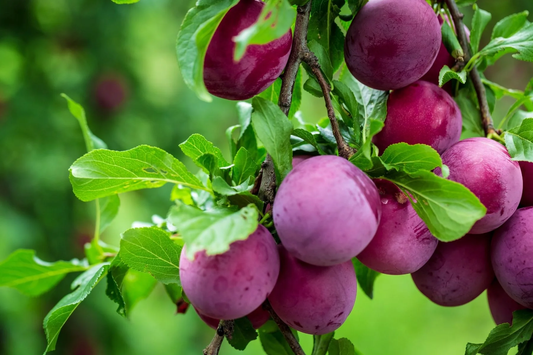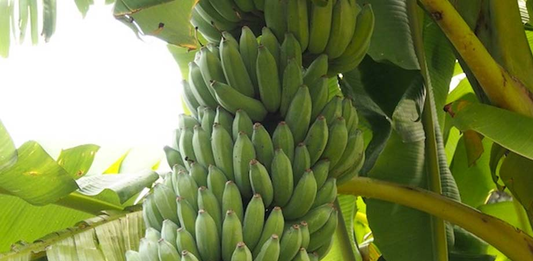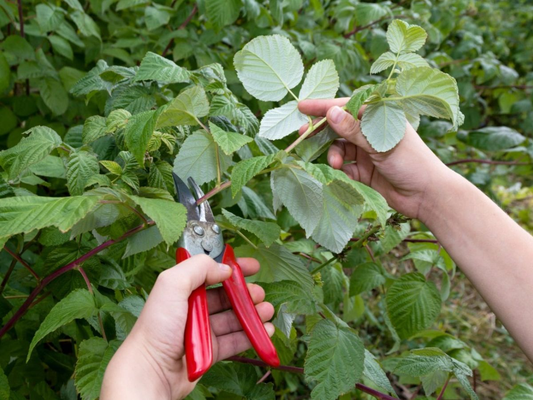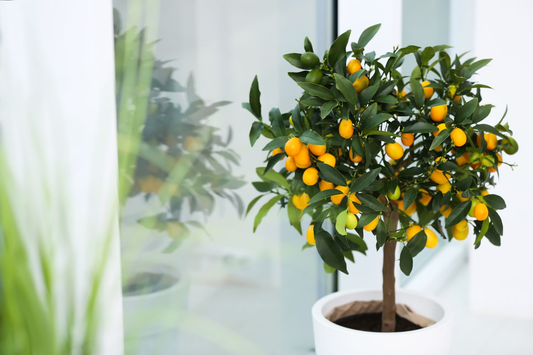Top 10 Best Plants for High Humidity Environments
Share
- 1. Introduction
- 2. What Are High Humidity Environments?
- 3. Factors to Consider When Choosing Plants for High Humidity
- 4. Top 10 Best Plants for High Humidity Environments
- 5. Benefits of Growing Plants in High Humidity Environments
- 6. Challenges of High Humidity for Plants and How to Overcome Them
- 7. Table: Comparison of the Top 10 Plants
- 8. Tips for Caring for Plants in High Humidity Environments
- 9. Conclusion
- 10. Frequently Asked Questions (FAQ)
1. Introduction
High humidity environments are areas where the air contains a significant amount of moisture, typically with humidity levels ranging between 60% and 90%. These environments are common in tropical regions, greenhouses, and specific indoor spaces like bathrooms or kitchens. While high humidity can be beneficial for certain plants, it also poses unique challenges, such as:
- Increased risk of fungal infections and mold growth on leaves and soil.
- Higher susceptibility to pests, such as aphids and spider mites.
- Difficulty in maintaining balanced moisture levels in soil.
Despite these challenges, selecting the right plants can turn high humidity into an advantage. Plants that thrive in such conditions are often equipped with features like:
- Thick, moisture-retentive leaves.
- Adaptations to prevent fungal growth, such as waxy coatings or natural resistance.
- Ability to grow well in indirect or low-light environments common in humid spaces.
Choosing plants that love high humidity is important because:
- They help purify the air by absorbing excess moisture and releasing oxygen.
- They create a lush, tropical ambiance perfect for enhancing indoor or outdoor spaces.
- They reduce stress and improve mental well-being with their vibrant greenery.
In this blog, we’ll explore the Top 10 Best Plants for High Humidity Environments—each carefully selected for their adaptability, beauty, and ability to flourish in moist conditions. These plants not only tolerate high humidity but also thrive in it, making them perfect choices for your home, garden, or office.
Here’s a sneak peek at some of the plants we’ll cover:
- Boston Fern (Nephrolepis exaltata): A feathery favorite for bathrooms and kitchens.
- Peace Lily (Spathiphyllum): A stunning plant that absorbs moisture and mold spores.
- Monstera (Monstera deliciosa): Known for its iconic split leaves and tropical vibe.
- Orchids (Orchidaceae): Exotic flowering plants perfect for humid corners.
- Snake Plant (Sansevieria trifasciata): A low-maintenance plant that thrives in any condition.
Let’s dive deeper into what makes these plants the best choices for high humidity environments and how to care for them effectively.

2. What Are High Humidity Environments?
High humidity environments are defined as areas where the air holds a substantial amount of moisture, typically with relative humidity levels ranging from 60% to 90%. These conditions are common in certain regions, specific indoor spaces, and controlled settings like greenhouses. High humidity is measured using a hygrometer, and anything above 60% is generally considered humid.
Common Examples of High Humidity Environments
- Tropical Regions: Areas like rainforests and coastal regions, where the warm climate naturally supports high moisture levels in the air.
- Greenhouses: Controlled environments designed to retain heat and moisture for optimal plant growth.
- Bathrooms: Frequent use of showers and baths creates moist air, making them ideal spots for humidity-loving plants.
- Kitchens: Steam from cooking and dishwashing increases air moisture levels, fostering a humid microclimate.
Impact of High Humidity on Plants
High humidity environments have a profound effect on plants, offering both advantages and challenges:
1. Benefits of High Humidity:
- Better Moisture Absorption: Plants can take in moisture through their leaves, reducing reliance on soil hydration.
- Reduced Water Stress: Consistent humidity prevents plants from drying out, especially those with thin or delicate leaves.
- Improved Growth: Humidity-loving plants, like ferns and orchids, often thrive with vibrant foliage and healthier blooms.
2. Challenges of High Humidity:
- Susceptibility to Mold and Fungi: Excess moisture creates the perfect environment for fungal infections, including powdery mildew and leaf spots.
- Increased Pest Infestations: Humid conditions attract pests like aphids, spider mites, and mealybugs.
- Overwatering Risks: In high-humidity areas, the soil may retain too much water, leading to root rot.
3. Factors to Consider When Choosing Plants for High Humidity
When selecting plants for high humidity environments, it’s important to ensure they can thrive in moisture-rich conditions without succumbing to common challenges like fungal infections or improper lighting. Below are key factors to consider when choosing the right plants for these environments:
1. Tolerance to Moisture
- Adaptability to Humidity: Choose plants that can withstand constant exposure to high levels of moisture without wilting or developing root rot.
- Leaf Structure: Plants with thick, waxy, or hairy leaves tend to resist excessive water absorption, reducing the risk of fungal growth.
- Natural Habitat: Tropical plants like ferns and calatheas naturally thrive in humid environments.
2. Light Requirements
- Low-Light Tolerance: Many high-humidity areas, such as bathrooms, have limited natural light. Opt for plants like peace lilies or pothos that can grow in low light.
- Bright Indirect Light: Some plants, like monstera and orchids, require bright, indirect sunlight to thrive despite humid conditions.
- Supplemental Lighting: Consider using grow lights if natural lighting conditions are insufficient.
3. Fungal Resistance
- Choose Resistant Varieties: Select plants with natural resistance to mildew, mold, and rot, such as snake plants or ZZ plants.
- Ventilation Needs: Ensure proper air circulation to prevent fungal growth, even for resistant plants.
4. Maintenance Needs
- Low-Maintenance Options: Plants like spider plants and philodendrons are perfect for humid areas, as they require minimal care.
- Fertilization Requirements: Opt for plants that don’t require frequent feeding, making them easier to manage.
- Pest Control: Select plants less prone to attracting pests common in humid environments, such as ferns and calatheas.

4. Top 10 Best Plants for High Humidity Environments
High humidity environments call for plants that thrive in moisture-rich conditions. Below are ten of the best plants suited for such environments, complete with their scientific names, key features, care tips, and ideal placement in the home or garden.
4.1. Boston Fern (Nephrolepis exaltata)
- Description: Known for its lush, feathery foliage, the Boston fern is a classic indoor plant that enhances the aesthetic of any space.
- Benefits: Acts as a natural air purifier by removing toxins and increasing humidity.
-
Care Tips:
- Prefers filtered or indirect light.
- Requires consistently moist soil without being waterlogged.
- Mist the leaves regularly to prevent drying out.
- Ideal Placement: Bathrooms, shaded patios, or humid corners indoors.
4.2. Peace Lily (Spathiphyllum)
- Description: A beautiful plant with glossy green leaves and elegant white blooms, perfect for adding sophistication to any room.
-
Benefits:
- Absorbs excess moisture from the air, reducing mold spores.
- Known for its ability to improve indoor air quality.
-
Care Tips:
- Thrives in indirect light; avoid direct sunlight.
- Water when the soil is dry to the touch but keep it consistently moist.
- Ideal for placement in humid rooms such as bathrooms.
4.3. Spider Plant (Chlorophytum comosum)
- Description: Hardy and adaptable, spider plants feature arching leaves and produce “baby” offshoots that can be propagated.
-
Benefits:
- Non-toxic to pets, making it ideal for households with animals.
- Highly adaptable to different humidity levels.
-
Care Tips:
- Prefers moderate humidity but thrives in high humidity as well.
- Place in bright, indirect light for optimal growth.
- Keep the soil slightly moist but avoid overwatering.
4.4. Monstera (Monstera deliciosa)
- Description: Known for its iconic split leaves, Monstera adds a tropical aesthetic to indoor spaces.
- Benefits: Enhances interiors with its bold foliage while thriving in humid conditions.
-
Care Tips:
- Enjoys medium to bright indirect light.
- Keep the soil moist but allow the top layer to dry slightly between waterings.
- Mist the leaves to maintain humidity levels.
- Ideal Placement: Living rooms or offices with access to natural light.
4.5. Calathea (Calathea spp.)
- Description: Calathea is celebrated for its vibrant foliage with intricate patterns and colorful undersides.
- Benefits: Ideal for creating a striking visual display in any space.
-
Care Tips:
- Needs consistently moist soil; avoid letting it dry out completely.
- Prefers filtered light as direct sunlight can scorch its leaves.
- Maintain high humidity by misting or using a humidifier.
- Ideal Placement: Shaded spots in living rooms or offices.
4.6. Orchids (Orchidaceae)
- Description: Exotic flowers available in diverse colors, adding elegance to any room.
- Benefits: Perfect for bathrooms and kitchens due to their humidity-loving nature.
-
Care Tips:
- Provide bright, indirect light; avoid harsh sunlight.
- Ensure the growing medium stays moist but well-drained.
- Regularly mist the leaves to maintain humidity.
4.7. Anthurium (Anthurium andraeanum)
- Description: Features bright red flowers and glossy green leaves, bringing warmth to any space.
- Benefits: Long-lasting blooms even in humid conditions.
-
Care Tips:
- Prefers indirect sunlight to maintain vibrant colors.
- Keep the soil evenly moist, but don’t overwater.
- Mist regularly to simulate its natural humid environment.
4.8. Bamboo Palm (Chamaedorea seifrizii)
- Description: A tall, elegant palm that adds height and greenery to any room.
- Benefits: Acts as a natural air purifier and thrives in humid settings.
-
Care Tips:
- Requires indirect light and should be kept away from direct sunlight.
- Mist regularly to keep the leaves hydrated.
- Water when the top layer of soil dries out.
4.9. Snake Plant (Sansevieria trifasciata)
- Description: Features upright, sword-like leaves, making it a stylish and low-maintenance option.
- Benefits: Can tolerate both low and high humidity levels with ease.
-
Care Tips:
- Prefers indirect light but can handle low-light conditions.
- Allow the soil to dry completely between waterings.
- Great for beginners due to its hardy nature.
4.10. Alocasia (Alocasia spp.)
- Description: Known for its large, dramatic leaves that give off a tropical aesthetic.
- Benefits: Perfect for greenhouses or humid corners of your home.
-
Care Tips:
- Requires consistently moist soil but avoid waterlogging.
- Thrives in filtered light; avoid direct sunlight.
- Mist leaves regularly to maintain high humidity.

5. Benefits of Growing Plants in High Humidity Environments
High humidity environments not only support the growth of specific plant species but also provide numerous benefits for your home, health, and the surrounding ecosystem. Here are the key advantages:
1. Improved Air Quality
- Plants thriving in humid conditions, like ferns and peace lilies, are natural air purifiers.
- They absorb harmful toxins such as formaldehyde and benzene while releasing fresh oxygen into the environment.
- The increased humidity helps to prevent dry air, reducing respiratory irritation and promoting better indoor air quality.
2. Enhanced Aesthetic Appeal
- Lush, tropical greenery can transform any space into a vibrant and refreshing sanctuary.
- Plants like monstera, orchids, and bamboo palms add an exotic and luxurious feel.
- Their striking foliage and blooms create a unique charm that elevates the ambiance of any room or garden.
3. Stress Relief
- Humid environments filled with greenery have a calming effect, reducing stress and anxiety.
- The vibrant colors and textures of plants, coupled with their oxygen-releasing properties, contribute to a soothing atmosphere.
- Caring for plants in such environments is often therapeutic and enhances mental well-being.
4. Ecosystem Support
- High humidity plants contribute to creating microenvironments that support other organisms, including beneficial insects, birds, and small animals.
- These plants promote the natural recycling of moisture, enriching the ecosystem and maintaining biodiversity.

6. Challenges of High Humidity for Plants and How to Overcome Them
While high humidity environments can be ideal for many plants, they also come with challenges that gardeners need to address. Here are the common issues faced and practical solutions to overcome them:
1. Fungal Growth
- Symptoms: Yellowing leaves, black spots, and powdery mildew are common signs of fungal infections in high humidity.
-
Solution:
- Improve air circulation by spacing out plants and using fans in enclosed spaces like greenhouses.
- Avoid overwatering, as excessive moisture encourages fungal growth.
- Remove infected leaves promptly to prevent the spread of fungi.
2. Pests
- Common Pests: Aphids, spider mites, and whiteflies thrive in high humidity environments.
-
Solution:
- Regularly inspect plants for signs of pest infestations, such as leaf discoloration or webbing.
- Use natural insecticides, such as neem oil sprays, to control pests without harming the plants.
- Introduce beneficial insects, like ladybugs, to help keep pest populations under control.
3. Overwatering Risks
- Signs: Root rot, wilting leaves, and persistently soggy soil are indicators of overwatering.
-
Solution:
- Use well-draining soil mixes to prevent water from pooling around plant roots.
- Ensure pots have proper drainage holes to allow excess water to escape.
- Let the top layer of soil dry out slightly between watering sessions.
7. Table: Comparison of the Top 10 Plants
| Plant Name | Ideal Light | Maintenance Level | Key Benefit | Common Issue |
|---|---|---|---|---|
| Boston Fern | Indirect Light | Moderate | Air purifier | Drying fronds |
| Peace Lily | Indirect Light | Easy | Mold reduction | Overwatering |
| Spider Plant | Bright Light | Very Easy | Pet-friendly | Browning tips |
| Monstera | Indirect Light | Moderate | Tropical vibe | Leaf discoloration |
| Calathea | Low/Indirect | Moderate | Vibrant foliage | Drooping leaves |
| Orchids | Indirect Light | Moderate | Exotic flowers | Root rot |
| Anthurium | Indirect Light | Easy | Long-lasting blooms | Yellowing leaves |
| Bamboo Palm | Indirect Light | Moderate | Air purification | Browning edges |
| Snake Plant | Any Light | Very Easy | Resilient in humidity | Overwatering |
| Alocasia | Indirect Light | Moderate | Dramatic tropical look | Pests |
8. Tips for Caring for Plants in High Humidity Environments
High humidity environments offer great conditions for plants, but proper care is essential to ensure they thrive. Here are some key tips for maintaining healthy plants in such environments:
- Ensure Proper Air Circulation: Use fans to prevent fungal issues by improving airflow around the plants. This helps avoid damp, stagnant air where mold and mildew thrive.
- Watering Schedule: Adjust watering based on the plant’s specific needs. Overwatering can lead to root rot, so always check the soil moisture before adding more water.
- Regular Cleaning: Wipe down leaves regularly to remove dust and prevent the growth of fungal spores. This helps the plant breathe better and absorb nutrients more efficiently.
- Soil Selection: Use well-draining, aerated soil to prevent water from accumulating around the roots. Choose a soil mix that promotes proper drainage while still retaining enough moisture for the plant.
- Humidity Monitoring: Maintain consistent humidity levels with a hygrometer. Ideal humidity levels for many tropical plants range between 60-80%, so make sure your space stays within this range.

9. Conclusion
Choosing the right plants for high humidity environments offers numerous benefits. These plants not only thrive in the conditions but also provide improved air quality, aesthetic appeal, and a calming atmosphere. By selecting plants such as the Boston Fern, Peace Lily, or Monstera, you can create a vibrant, lush space that enhances both your home and your well-being. Their ability to purify the air and support healthier indoor environments makes them an excellent choice for anyone looking to enrich their living space.
Additionally, growing plants suited for high humidity conditions can be an enjoyable and rewarding experience. Whether you're looking to add a touch of greenery to your bathroom, kitchen, or greenhouse, the possibilities are endless. With the right care and attention, these plants can thrive, transforming your space into a tropical oasis.
So why not try your hand at growing your own high-humidity plants? With their numerous benefits and beauty, they can truly elevate your home and garden. Start exploring the best plants for high humidity environments and bring nature indoors today!
10. Frequently Asked Questions (FAQ)
Q1: What are the best plants for beginners in high humidity?
Spider Plant and Snake Plant are ideal for beginners due to their resilience. These plants are forgiving and thrive even in high humidity environments with minimal care.
Q2: Can high humidity harm certain plants?
Yes, plants not adapted to high humidity may develop fungal diseases or suffer from root rot. It's important to choose plants that are suited for the conditions, such as those with fungal resistance and good drainage.
Q3: How can I increase humidity for my plants indoors?
You can increase humidity by using humidifiers, misting the leaves lightly, or grouping plants together to create a microclimate. Keeping plants in rooms like bathrooms and kitchens that naturally have higher humidity levels can also help.
Q4: What is the best soil type for plants in humid environments?
Well-draining soil with organic matter, such as peat or perlite, works best for plants in high humidity environments. It helps prevent waterlogging while retaining enough moisture for the plants to thrive.
Q5: Do high humidity plants need frequent misting?
Some plants do benefit from misting, but it’s essential to ensure that misting does not encourage fungal growth or mold. Mist lightly and make sure plants are not left in stagnant, damp conditions.
Additional Resources
How to Create a Butterfly Garden




